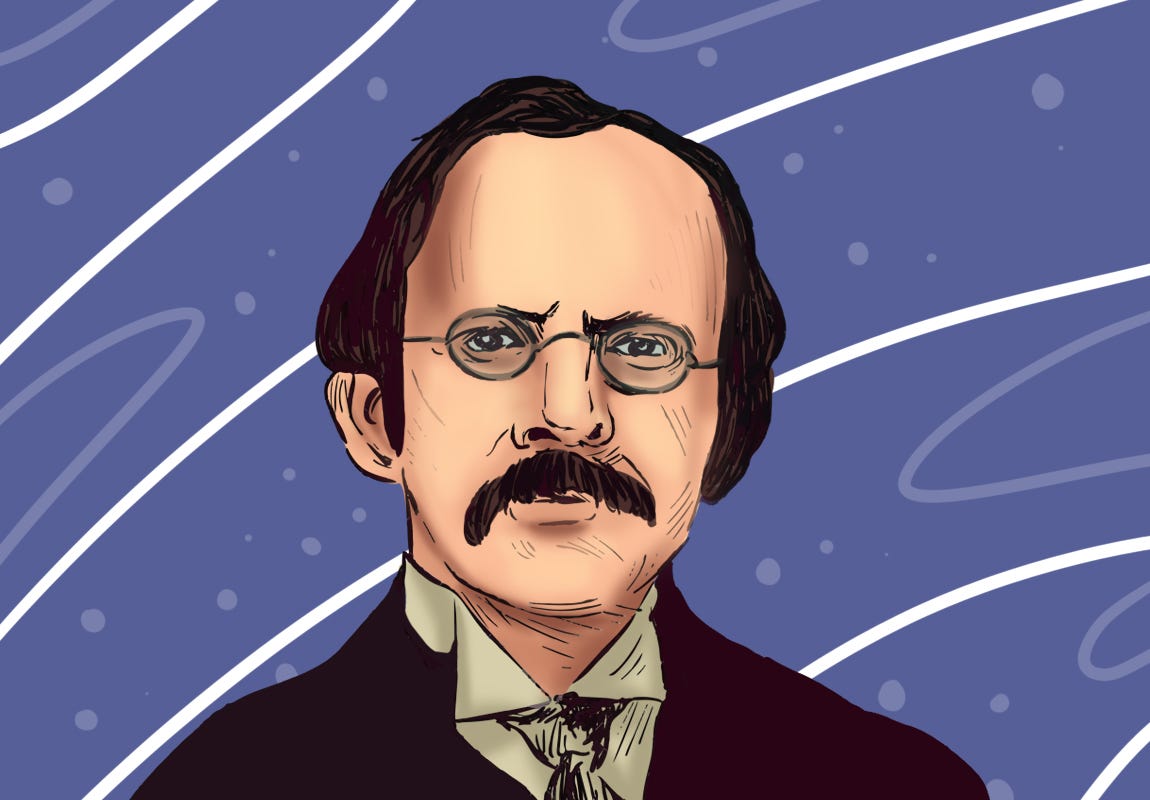J J Thompson: The Discoverer of Electrons
Joseph John Thomson was born in 1856 to Joseph James Thomson, a bookseller, and Emma Swindells in Cheetham Hill, near Manchester, England. His father wanted him to be an engineer but could not find an apprenticeship at an engineering firm due to their poor financial state. So instead, Thompson became a student at Owens College, the University of Manchester, at age 14. Then, in 1876, he received a small scholarship to study mathematics at Trinity College at Cambridge.
After graduating, Thomson worked in Lord Rayleigh's Cavendish Laboratory. He quickly gained membership in the elite Royal Society and, at the age of 28, was appointed Rayleigh's successor as the Cavendish Professor of Physics. He was well-liked and respected, and students flocked from all over the world to study with him.
Thomson began researching cathode rays, blazing beams of light produced by an electrical discharge in a high-vacuum tube, in 1894. Because the nature of cathode rays was unknown then, it was a significant research topic among physicists. As a result, Thomson developed superior equipment and processes to those previously employed.
He calculated the ratio of electrical charge to the mass of the particles by passing the rays through a vacuum and measuring the angle at which they were deflected. He discovered that the ratio was the same regardless of the type of gas used, which led him to conclude that the particles that made up the gases were universal.
Thomson began exploring positively charged ions, sometimes known as positive rays, in 1906.
Thomson discovered that all matter is composed of microscopic particles considerably smaller than atoms. He originally referred to these particles as 'corpuscles,' now known as electrons. This discovery challenged the widely held belief that the atom was the smallest fundamental unit.
Thomson began exploring positively charged ions, sometimes known as positive rays, in 1906. The same year, he received the Nobel Prize for Physics for his research into the electrical conductivity of gases. This led to another of his famous findings in 1912 when he channelled a stream of ionised neon through a magnetic and an electric field and measured the charge-to-mass ratio using deflection techniques. Through this, he discovered that neon was made up of two types of atoms and established the existence of stable isotopes. This was the first-time mass spectrometry was used.
In 1890, Thomson married one of his students, Rose Paget, with whom he had one daughter, Joan, and one son, George Paget Thomson. J.J. Thomson wrote 13 books and over 200 papers during his lifetime. In addition to the Nobel Prize in 1906, he received a knighthood from King Edward VII in 1908. In 1918, he quit research to become a Master at Trinity College. He died on August 30, 1940, in Cambridge and is buried in Westminster Abbey beside Isaac Newton and Charles Darwin.


